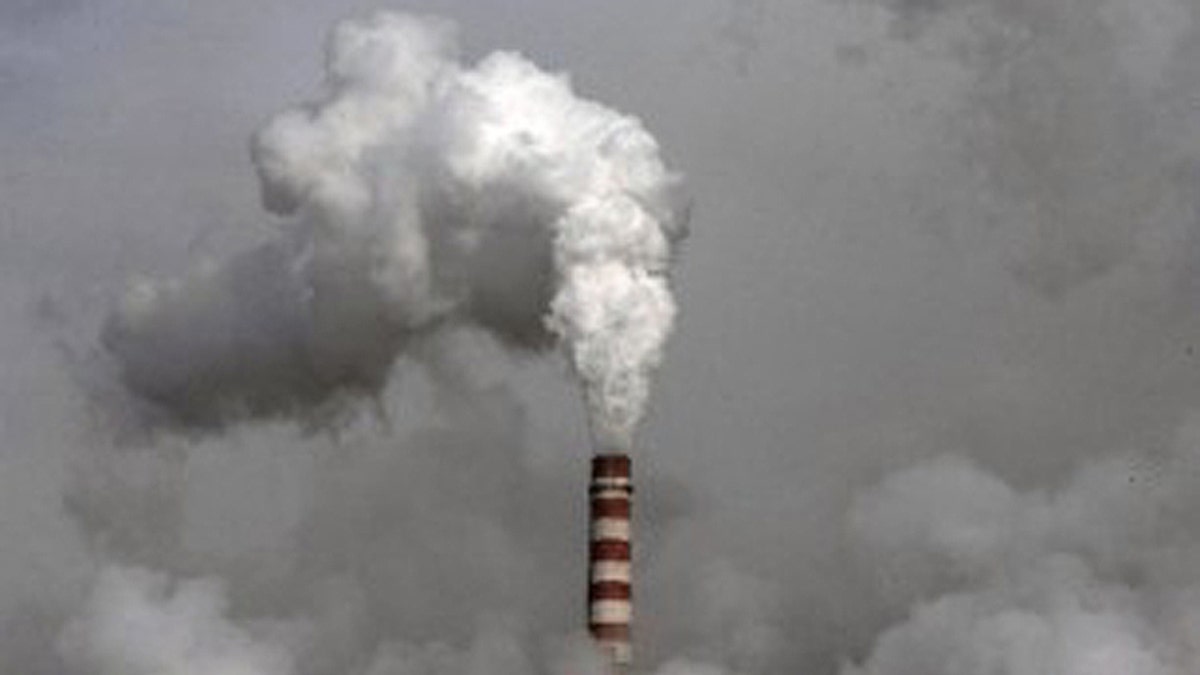
FirstEnergy Corp., headquartered in Ohio, closed power plants on Saturday in Albright, Rivesville, and Willow Island, W.Va., along with four others in Ohio, Maryland and Pennsylvania as the company phases out aging facilities that cannot comply with new environmental regulations. (AP)
The closure of seven coal-fired electric plants in four states could be a sign of things to come as tough new emissions standards threaten to relegate America’s top energy source to the back burner.
FirstEnergy Corp., headquartered in Ohio, closed power plants on Saturday in Albright, Rivesville, and Willow Island, W.Va., along with four others in Ohio, Maryland and Pennsylvania as the company phases out aging facilities that cannot comply with new environmental regulations. Three others in Ohio also will be closed in 2015, company officials told FoxNews.com.
“We estimate that it will cost approximately $975 million to make our remaining seven coal-fired power plants compliant with the new [Mercury and Air Toxics Standards] rules,” FirstEnergy spokesman Mark Durbin told FoxNews.com. “Another challenge that the entire industry is facing is a very aggressive three-year timeframe to get the work done. It’s also important to note that numerous other [Environmental Protection Agency] regulations, including those for coal ash, water intake and particulates, are on the horizon.”
[pullquote]
Some 650 jobs were originally expected to be affected by the closures, but fewer than 50 employees will be fired since many workers have taken other positions within the company or retired, Durbin said.
The Obama administration has invested billions promoting cleaner coal technology through “carbon capture, use and storage (CCUS),” a process that focuses on trapping emissions from coal-fired power plants to either reusing or storing it so it will not enter the atmosphere. The commercial success of CCUS depends on developing more affordable technologies since the cost of capturing carbon dioxide from power plants is currently too high for wide-scale implementation.
Critics of the new federal regulations say they amount to a war on coal, which the U.S. Energy Information Administration says accounts for 42 percent of all electricity generated in the United States. And not only is coal the main weapon in the nation’s energy arsenal, the U.S. holds the world's largest estimated recoverable reserves of the fossil fuel, according to the federal government. They also note that coal-fired plants employ an estimated 60,000 Americans.
“Electric rates will be going up and up as a result of these standards,” Andrew Morriss, a University of Alabama law professor and co-author of “The False Promise of Green Energy,” wrote FoxNews.com in an email. “Utilities will have to either close or spend money upgrading plants, and those are costs state regulators are bound by law to allow them to pass on to electric consumers. Since electricity is embedded in everything from pharmaceuticals to clothing, the prices of goods made in America will also be going up.”
In West Virginia, coal is the state’s primary industry, providing 63,000 jobs and generating $26 billion in total economic impact annually, according to the West Virginia Coal Association.
And according to companies like FirstEnergy, environmental protection efforts are better than ever. Since the Clean Air Act became law in 1970, FirstEnergy and its predecessors have invested more than $10 billion in those cleanup efforts.
“Our efforts are working,” Durbin continued. “Since 1990, FirstEnergy has reduced emissions of nitrogen oxides by more than 76 percent, sulfur dioxide by more than 86 percent, and mercury by about 56 percent.”
But the Union of Concerned Scientists claims the nation’s approximately 600 coal-fired plants — which produce nearly half of all electricity in the U.S. — cause acid rain, global warming and release toxic chemicals including mercury into the air.
“Coal is a dirty energy source,” the group’s website reads. “It pollutes our environment with toxins, produces a quarter of U.S. global warming emissions, and accounts for a whopping 80 percent of all carbon emissions produced by power generation nationwide. When we burn coal for electricity, we place our health, our environment, and our planet at risk. It’s time to reduce our dependence on this polluting energy source.”

